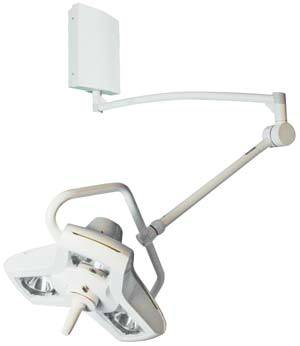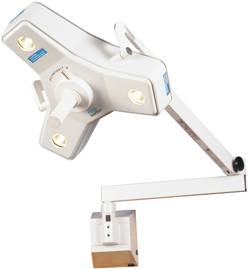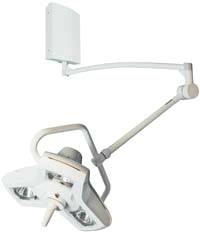Home » Hospital & Durable Medical Equipment » Tips For Selecting Surgical Lights » Tips For Selecting Surgical Lights
Tips For Selecting Surgical Lights

Wall Mount Major Surgery Light
Retail Price: $6,789.77
Your Price: $5,029.46

Wall Mount Minor Surgery Light
Retail Price: $3,163.38
Your Price: $2,343.24

Minor Surgery & Procedure Wall Mount Light
Retail Price: $4,533.81
Your Price: $3,358.38
There are a lot of factors to consider when choosing surgical lights for operating theatres as well as patient rooms and hospital offices. Depending on the type of procedure or examination that is being completed these highly focused, clear white lights are perfect for allowing the maximum possible visibility in any type of patient care environment. Having the right style of operating light can make a huge difference in the time it takes for a medical professional to complete an examination or procedure.
For operating light options one of the major considerations is choosing between a double head ceiling light and single mount ceiling light. As the names imply the difference between the two is the number of arms attached to the mount. Double mount lights will have two arms that can be independently positioned to eliminate all shadows and to maximize the lighted area. Single mount lights have one arm that has unlimited rotation for correct positioning. Both are considered ideal as surgical lights for both minor and major procedures.
These lights can have several features that make one option more appropriate in a given situation than others. Positioning options are considered important by operating room staff and can include either hand positioning or positioning by foot control. Hand positioning is completed through a handle that can be autoclaving or may be designed to be easily sterilized. Light controls, including intensity adjustments and on and off switches are often found on the handle to allow immediate access to all necessary controls in one centralized location. Virtually all of these type of surgical lights will have full rotation in all directions for pinpoint precision in positioning. Reflectors within the design provide full illumination in all directions to provide consistency and allow a greater degree of control over the desired area.
The intensity of the lights at different settings is a major factor to consider. The light rating can be provided in either lux or fc (foot candles). A foot candle is equal to approximately 10.74 lux or one lumen per square foot, typically both measures will be provided on the light specifications. In addition to the intensity rating selecting an operating light that also provides a high color rendering index of 95 or higher is considered to meet all requirements under UL 60601-1 and other international standards. For most double and single mount surgical lights the rating will be between 90,000 and 120,000 lux at one meter.
LED lights have become very popular both in surgical lights for operating theatres as well as for illumination in patient examination rooms. These lights are highly economical and have the added advantage of producing virtually no noticeable heat while in operation. In smaller patient examination rooms and when the light is in close proximity to the patient and medical staff is an obvious benefit. For the larger types of wall mounted units IRC halogen bulbs are also used to provide bright lighting conditions without any issues of heat on the area where the light is directed. With multiple lamps within each light it is also possible to focus in on positioning the lights with either a wide or narrow area of focus depending on the specific needs of the surgeon or doctor.
Wall mount or desk mount surgical lights can be very compact for use in smaller rooms. Gooseneck styles of single lamp lights can be pushed up or back when not in use then rotated and positioned to provide a direct, focused beam of light where needed. These lights can also be designed to be positioned on the rails of examination tables to allow a full range of motion over the entire surface area. Often these types of lamps are seen in dermatology, cosmetic surgery, ear nose and throat and ophthalmology offices.














